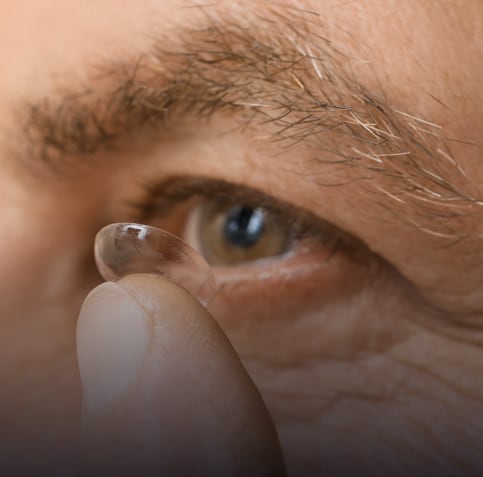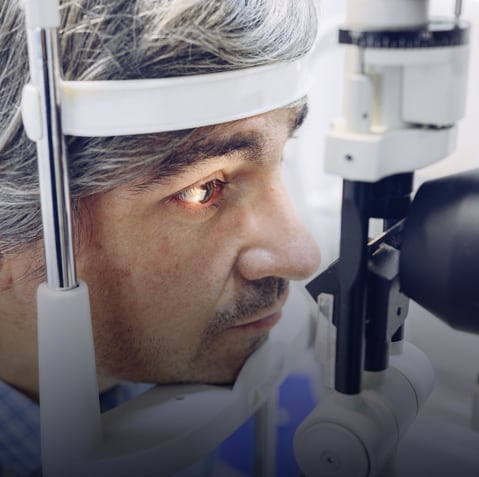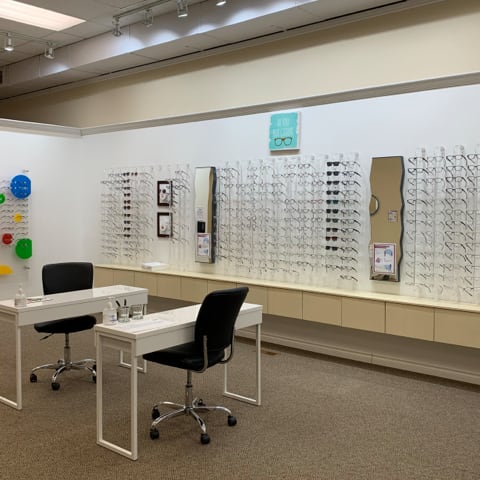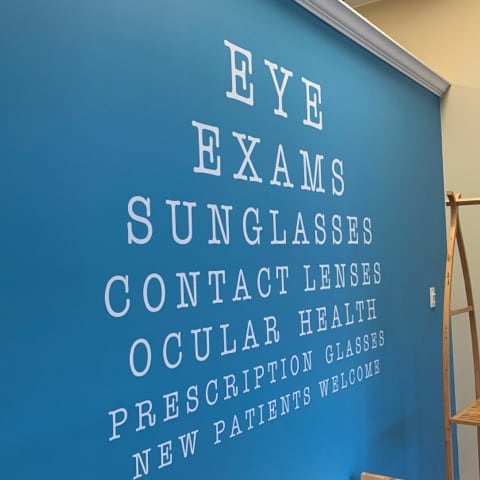Live Life Comfortably
If you struggle with irritated, red, watery eyes, you might have dry eye syndrome.
Dry eye syndrome is among the most common eye conditions Canadians can experience, but with the help of our team, you can find strategies to maintain your comfort and enjoy your vision.
Our comprehensive approach considers even the most subtle aspects of your eye comfort to find solutions suitable for you. From your working and living environment to the overall quality of your tears, we consider every factor to help you achieve the comfort you deserve.
Book an appointment at St. Marys Optometry today!
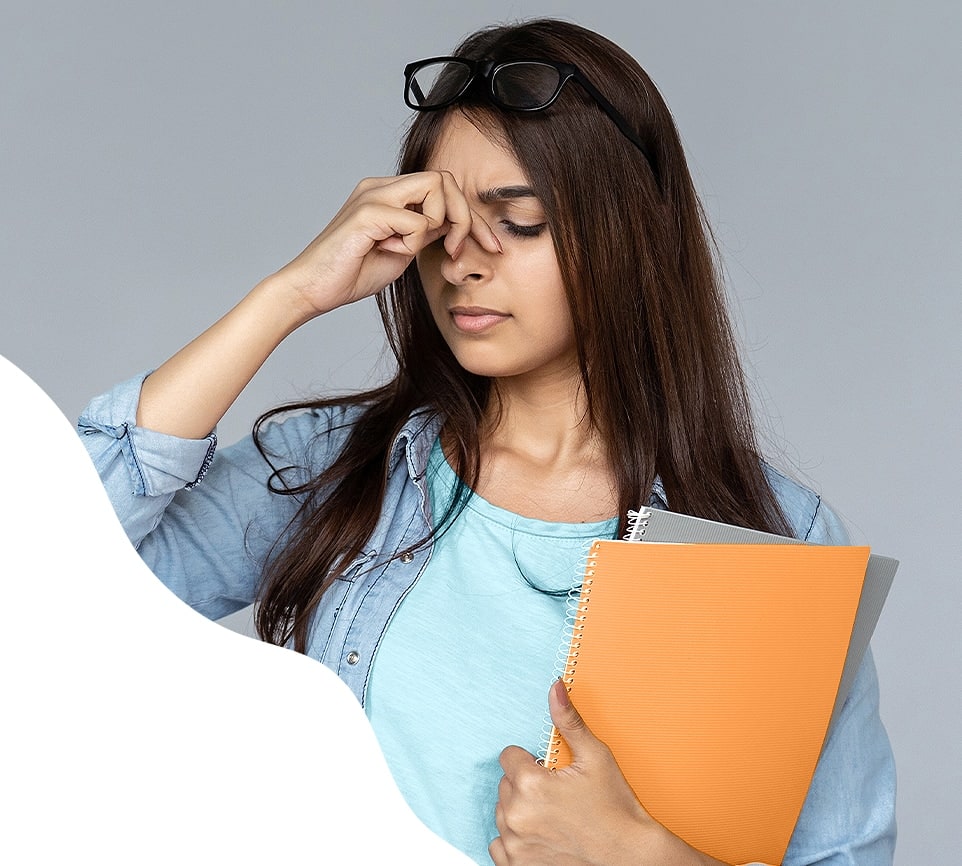
So, What Are Dry Eyes?
Dry eye syndrome is an eye condition that occurs when there is an issue with your tear quality. Without quality tears you can develop several irritating symptoms like:
- Redness
- Wateriness
- Blurry vision
- General discomfort
The risk of developing dry eye can increase as you age, but other factors can contribute to its development. These factors can include overall health conditions, medications, and your environment.

Take our Dry Eye Questionnaire to find out if you are suffering from dry eye
Let’s Look at Your Tear Film
To get an idea of what may be causing your dry eye symptoms, we’ll take a detailed look at your tear quality.
The entire surface of your eyes is covered by the tear film, a thin layer of tears that maintain your eye comfort and keep your eyes hydrated.
Your tear film is made of 3 unique ingredients, each with a special role in maintaining your eye comfort. If you have an eye problem that affects these ingredients, you may experience dry eye symptoms.
Mucous Layer
Mucous makes up the innermost layer of your tear film. It’s produced by your conjunctiva and is responsible for keeping your tears adhered to your eye surface.
Watery Layer
Water makes up the middle and largest layer of your tear film. Your tear film gets this layer from glands located near your eye, and it’s responsible for keeping your eyes hydrated. The watery layer is also important for washing away dirt and other particles from your eye surface.
Oil Layer
Oils, produced by tiny glands on the edges of your eyelid called meibomian glands, make up the outermost layer of your tear film. The oil layer seals in your tear film, preventing it from evaporating too quickly, and maintaining your eye comfort.
What Causes Dry Eye?
What Is MGD?
Meibomian gland dysfunction is an issue that affects the glands responsible for producing the oil content in your tear film. Without oils in your tear film, your tears evaporate quicker than normal. As a result, you can experience several uncomfortable dry eye symptoms.
A common issue that can develop alongside MGD is blepharitis, which is the inflammation of your eyelid. Blepharitis can cause crustiness and flakiness around your eyelid, contributing to your MGD symptoms.
How Does It Develop?
There are many ways you could develop MGD. Poor eyelid hygiene is a common cause, but you may also develop it if blockages form in your meibomian glands or if you have a health condition that affects oil production.
The treatment we recommend depends on what’s causing your symptoms. In some cases, we may recommend medications, but we could also recommend in-office treatments to clear away blockages.
How Do We Detect It?
We can detect MGD by observing your eyelids for signs of hygiene problems or examining your tear film to see how fast it evaporates.
Once we determine if MGD is causing your symptoms, we can get to work on developing a strategy to help improve your eye comfort.
There are 2 types of dry eye you can experience: aqueous tear deficiency and evaporative dry eye.
Aqueous tear deficiency occurs when there is a lack of water content in your tear film. Without water, your eyes can have difficulty maintaining hydration to remain comfortable.
Evaporative dry eye is the most common version of the condition, with some studies showing it is responsible for 85% of dry eye cases. It develops when there is a lack of oil in your tear film, which can cause the tear film to evaporate quicker than normal.
Out of all the possible causes of dry eye, the most common is meibomian gland dysfunction, or MGD.
How We Manage Your Eye Comfort
Ultimately, the strategy we provide depends on what’s causing your symptoms. Some people may find adequate relief using eye drops, but others may need comprehensive techniques to manage their eye comfort.
We can offer several strategies based on what we discover during a dry eye appointment, including:
- Prescription eye drops
- Oral medications
- Making lifestyle changes
Get Help Today
You deserve to enjoy long-lasting eye comfort. If you struggle with dry eye symptoms, contact our awesome team at St. Marys Optometry and book your appointment today.
Our location
Wanna see what we’re all about?
We’re in the heart of St. Marys on Queen Street East. There’s parking outside our front door, but you can easily walk to us even if you park a few blocks away.
Contact Information
- Phone: 519-284-4144
- Email: [email protected]
(Do not send personal health information by email.)
Address
- 151 Queen St. E
- St. Marys, ON N4X 1A9
When We’re Open
- Monday: 8:00 AM – 4:00 PM
- Tuesday: 1:00 PM – 7:00 PM
- Wednesday: 8:00 AM – 4:00 PM
- Thursday: 8:00 AM – 4:00 PM
- Friday: 8:00 AM – 3:30 PM
- Saturday: Closed
- Sunday: Closed
Our Brands









